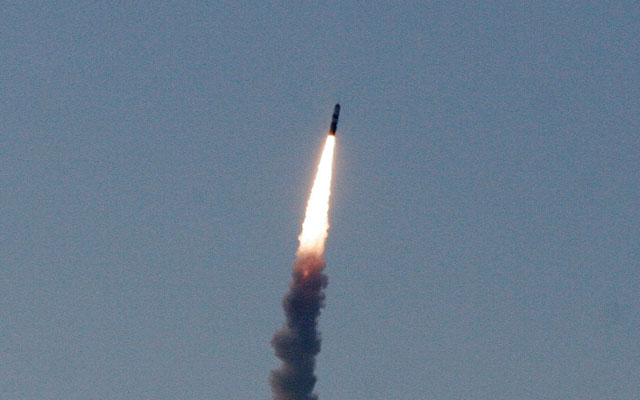A Congressional Budget Office (CBO) report released last week estimates that the cost of nuclear forces for 2014–2023 will be $355 billion—an average of $39.4 billion a year. Nuclear forces are essential for U.S. national security, which makes this investment negligible; indeed, Americans spend much more on their pets.
The CBO’s report also included activities that the nation would have to pursue regardless of whether it has nuclear weapons. For example, the CBO estimate includes $107 billion for “missile defense and other defenses.”
The U.S. needs to develop its missile defense. North Korea and Iran are developing capabilities that could strike the U.S. and its allies from anywhere in the world in less than 33 minutes. It is much easier to threaten population and economic centers, which the U.S. values, than to take down military and leadership targets, which the U.S. adversaries value. Strategic force posture—of which missile defense is a part—needs to reflect this asymmetry. It should deny adversaries and potential adversaries any benefit from blackmailing the U.S. and its allies and deter large-scale attacks on U.S. interests.
Between 2014 and 2023, the U.S. will pay $34 billion for threat reduction and arms control implementation—a significant cost, especially considering that Russia, a major U.S. arms control partner, is violating its political and legal arms control obligations. Rather than dismantling its own arsenal, the U.S. should focus on nuclear weapons and infrastructure modernization.
U.S. nuclear weapons infrastructure continues to be underfunded. Funding for supporting the weapons infrastructure includes nuclear dismantlement, sustainment of the nuclear infrastructure, follow-on strategic systems, and sustainment of warheads currently in the stockpile.
The CBO estimates the costs for new delivery systems (intercontinental-range ballistic missiles, submarines, and bombers) at $76 billion over the next decade. To put that in perspective, in 2011 alone, Americans spent $61 billion on their pets.
The U.S. currently sustains, not modernizes, its nuclear weapons arsenal. It follows the policy of no new nuclear weapons and no new missions or capabilities for the weapons the U.S. currently deploys.
The CBO attributes 25 percent of the new bomber cost to nuclear forces. The new bomber, however, won’t be nuclear certified until about 15 years after it enters the force. The CBO attributed 100 percent of the costs associated with the B-2 bomber to the nuclear mission, even though the majority of missions that the bomber flies today are conventional.
The CBO also notes that fixed costs for infrastructure “and other factors” mean that
a partial reduction in the size of the force from cuts to any of the current systems that make up the nuclear triad would be likely to result in cost savings that were proportionally less than the relative reduction in the force.
This means that the U.S. wouldn’t save substantive resources by cutting its nuclear forces. Indeed, the effect would be just the opposite as the world is becoming more dangerous and U.S. assurances are more sought after than ever.
The United States must continue to sustain and should modernize its nuclear weapons infrastructure, delivery systems, and nuclear warheads. Not doing so will result in emboldened adversaries, more nuclear weapons in the world, and allies questioning U.S. commitment to their security.
